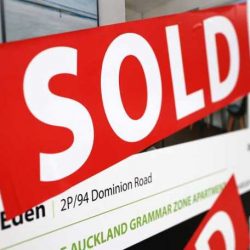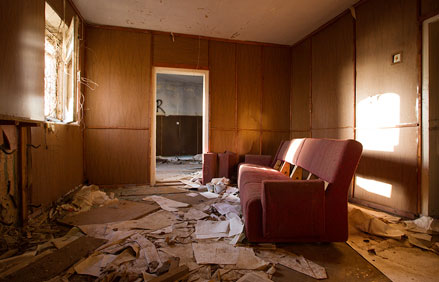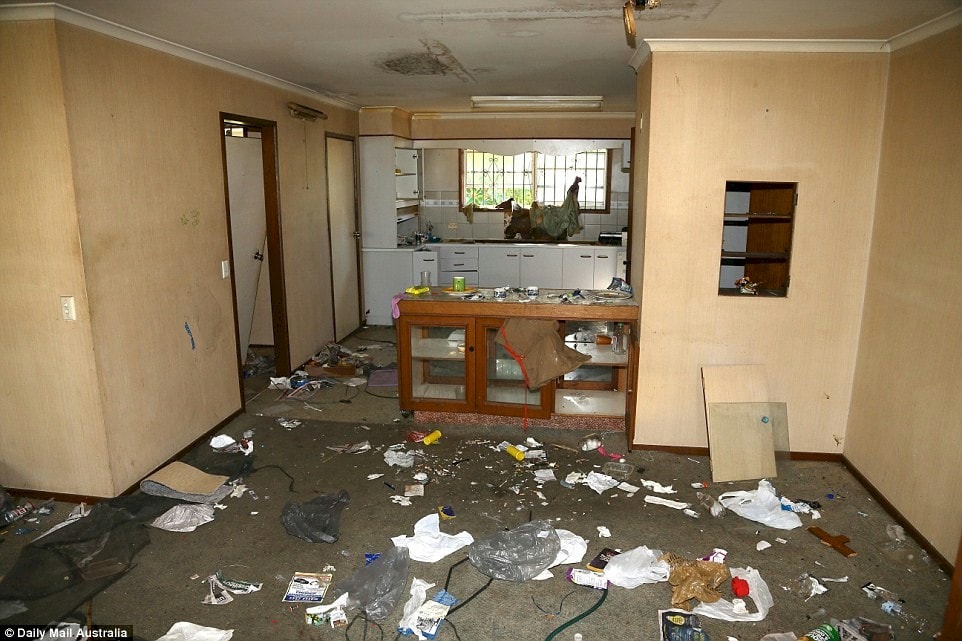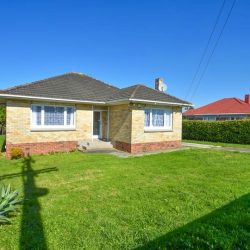
Residents from across Auckland have reacted to revelations there could be rezoned for more housing and apartments.
The Herald revealed this morning confidential documents and maps showing the poshest and poorest neighbourhoods in the city will be rezoned for more housing and apartments.
Some of Takapuna’s most prized streets could lose single house, tree and garden status. Housing density along Lake Rd, one of the city’s worst bottlenecks, will more than double in places.
Many of South Auckland’s poorest suburbs are also set to house more people. Intensive terraced housing and apartment blocks of four to six storeys are planned for Otara, Mangere, Manurewa and Clendon Park.
“Doubling the population through building will cause complete choking of the road and increase costs to business through lateness. Unless another road is built to link traffic to, particularly, Esmonde Road and the bridge (another nightmare), which no-one in those suburbs will want, it simply won’t work.
“It goes much further than increasing housing, it needs the whole infrastructure around new housing to be considered very carefully. As usual with city planning, you have all these people sitting around desks with plans and no realistic appreciation of the huge costs and pragmatic issue surrounding housing and traffic problems.”
“Finally, with one road taking people out of Devonport, where are the considerations of safety in the event of the need to evacuate the area?”
Owen Carter said the biggest issue in Takapuna was congestion.
“Hard to imagine affordable housing in Takapuna… but despite the nimbyism of a few upper end streets, the biggest issue that would need addressing is the transport infrastructure.
“Not only are you looking at unsustainable traffic flows on a single road in and out, but in the same way that you need to have two potential exits in a house in case of emergency, you don’t want to double the population of a coastal region and then give them only one way out in the case of a disaster (natural or manmade).”
He suspected there was another plan for another harbour.
Simon Garner said he had put in a submission over density plans.
“[I] feel the serious concerns over Auckland’s ‘Most liveable city’ becoming a dense, green-less, sun-less, grid-locked city. The councillors cannot see sense and the developers get exactly what they want.”
Emilio M. Escayol supported the plan.
“Of course this will affect me, and probably most part of Aucklanders as well, but in a good way,” he said.
“It was about time this city started doing the right things like rezoning and intensification in the suburbs. Cheers for that.”
The full extent of the changes, marked “confidential” and “legally privileged”, were discussed by councillors on the Unitary Plan committee behind closed doors on Tuesday.
They represent the council’s latest position on the Unitary Plan for the North Shore, Rodney, the eastern suburbs of Howick and Pakuranga and South Auckland.
The Herald has not seen the zoning changes for the central isthmus and West Auckland, approved by the Unitary Plan committee on November 10.
This week, the Herald reported senior council planner John Duguid saying tens of thousands of suburban homes in Auckland would probably be rezoned from the single house zone for multiple townhouses and apartments.
Mr Duguid said the rezoning was part of the Unitary Plan process and the council would not notify individual homeowners of the changes. Maps showing the zone changes will be made public next month.
Council officers have based the latest zone changes on submissions to the Unitary Plan as well as “out of scope” changes not supported by a submission where they think it is necessary.
Some of the biggest changes are occurring on the North Shore. In Takapuna, already earmarked for high-rise apartments around the town centre, more terraced housing is planned. Housing density is increasing along Lake Rd, from Takapuna to Belmont.
Devonport will be zoned historic character to preserve its current status, but the coastal suburbs of Milford, Browns Bays, Mairangi Bay and Castor Bay will have fewer single houses and more townhouses and apartments.
Townships in Rodney – Warkworth, Wellsford, Snells Beach, Matakana and Puhoi – face little change. Part of Kumeu changes from single house to allow townhouses.
In Howick, the single house zone east of the town centre has been kept because it is too far to walk to public transport. More apartment buildings are planned along Pakuranga to Highland Park town centre.
In South Auckland, about a dozen sites in Otara have been recommended for more intensification, including apartments in Wyona Place and south of East Tamaki Rd to Bairds Rd. Mangere and Manurewa are getting more apartments, including around Clendon Park.
Richard Burton, of the Auckland 2040 community group, said the council appeared to be making haphazard changes when it should be involving the community.
In his suburb of Takapuna, plans to rezone three of the most prestigious streets – Minnehaha, Brett and O’Neills Aves – for townhouses was little short of vandalism, he said.
Mr Burton said large parts of Auckland were already zoned for intensification, Auckland 2040 had agreed to relax density controls to increase capacity and the council should wait and see what happens before making further changes.
He said apartments in poorer areas of Auckland raised issues of overcrowding for large Pacific Island and Maori families and other social issues.
The push for more intensification is supported by developers, Housing New Zealand and youth lobby group Generation Zero.
“Locking up existing suburbs from new housing development is a big reason why houses prices are spiralling beyond the reach of young people,” Generation Zero spokesman Ryan Mearns told the Herald this week. “We’re pleased to see much needed changes to the single house zone in the inner city.”
Deputy mayor Penny Hulse, who is overseeing the Unitary Plan and supports the overall thrust of the changes, would not comment yesterday.
In a statement, the council said the documents were confidential and they would not be discussed until they were finalised and provided to the independent hearings panel for the Unitary Plan.
“Following Tuesday’s Unitary Plan committee meeting, there will be alterations to the maps. The maps will be made publicly available next month so that the public have an understanding on council’s proposed position,” a spokeswoman said.
She said there was a statutory process of hearings beginning in March, followed by formal recommendations from the panel to the council in July next year. There will be no decisions on the Unitary Plan until at least August 2016.
Housing zones
Single house
• 32 per cent of Auckland housing
• One house per 600sq m, 8m building height
Mixed housing suburban (MHS)
• 40 per cent of Auckland housing
• One dwelling per 200sq m on sites less than 1000sq m and no density limits on sites greater than 1000sq m, 2 storey permitted limit
Mixed housing urban
• 10 per cent of Auckland housing
• No density limits, but strengthened design controls. 3-storey permitted limit.
Terraced housing and apartment buildings
• 5 per cent of Auckland housing
• Allows for 4 to 6 storeys
Residents fear loss of charming big sections
You are joking, says Chris Collier, when told her five-bedroom house could be replaced with six townhouses.
Ms Collier lives in O’Neills Ave, one of Takapuna’s prime waterfront addresses.
“I love it here,” said Ms Collier, who is attracted to the big houses, manicured gardens and large trees which make O’Neills Ave, Brett Ave and Minnehaha Ave some of the most desirable real estate in Auckland.
Now, without a single resident asking, the council is proposing to rezone the three avenues from low density suburban housing for townhouses with no density controls on large sections.
At Ms Collier’s property, a 90-year-old house on a 1096sq m section, six townhouses could be built.
“I would hate that. One of the great things about houses in the street are the big sections. I would never want that to change,” she said.
Faye Shields, who has lived in Brett Ave for 20 years, said the proposed zoning changes would change the character of the neighbourhood, add to parking problems and reduce sunlight. The council, she said, should be telling residents about the proposed changes.
May Wang is also unimpressed at the proposed changes to the family’s property, a white villa-cum-bungalow with white roses in the front garden.
Mrs Wang moved with family from Mt Roskill to Brett Ave two years ago for the Takapuna lifestyle of a quiet life close to the beach.
A short distance away, but often a painfully slow drive, Tony Keenan, chairman of the Belmont and Hauraki Community Association, is fired up about more than doubling the housing density around Hauraki Corner and further down Lake Rd.
Lake Rd is already congested for seven hours on weekdays and longer at the weekend. There was gridlock, unreliable bus services and dangers for cyclists. “It’s chaos,” he said.
Natural growth on the peninsula was being compounded with intensive housing plans by Housing New Zealand and Ngati Whatua on navy land, plus intensification on Lake Rd.
Mr Keenan said developments like Long Bay and Stonefields had not been able to proceed until the necessary infrastructure was built.
“If you have to intensify do it sensibly,” Mr Keenan said. “Take the time and plan it in steps with provision for infrastructure.”







